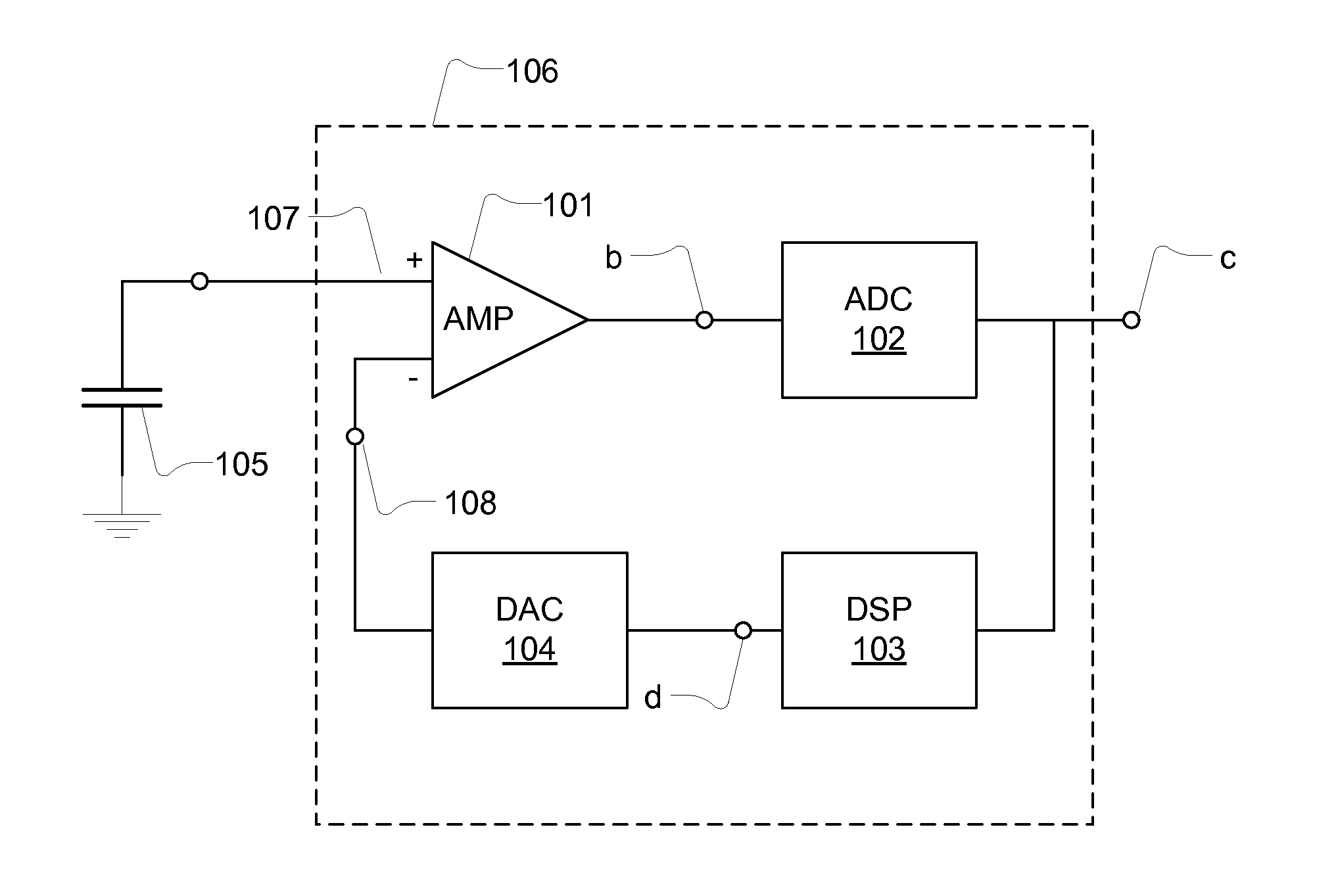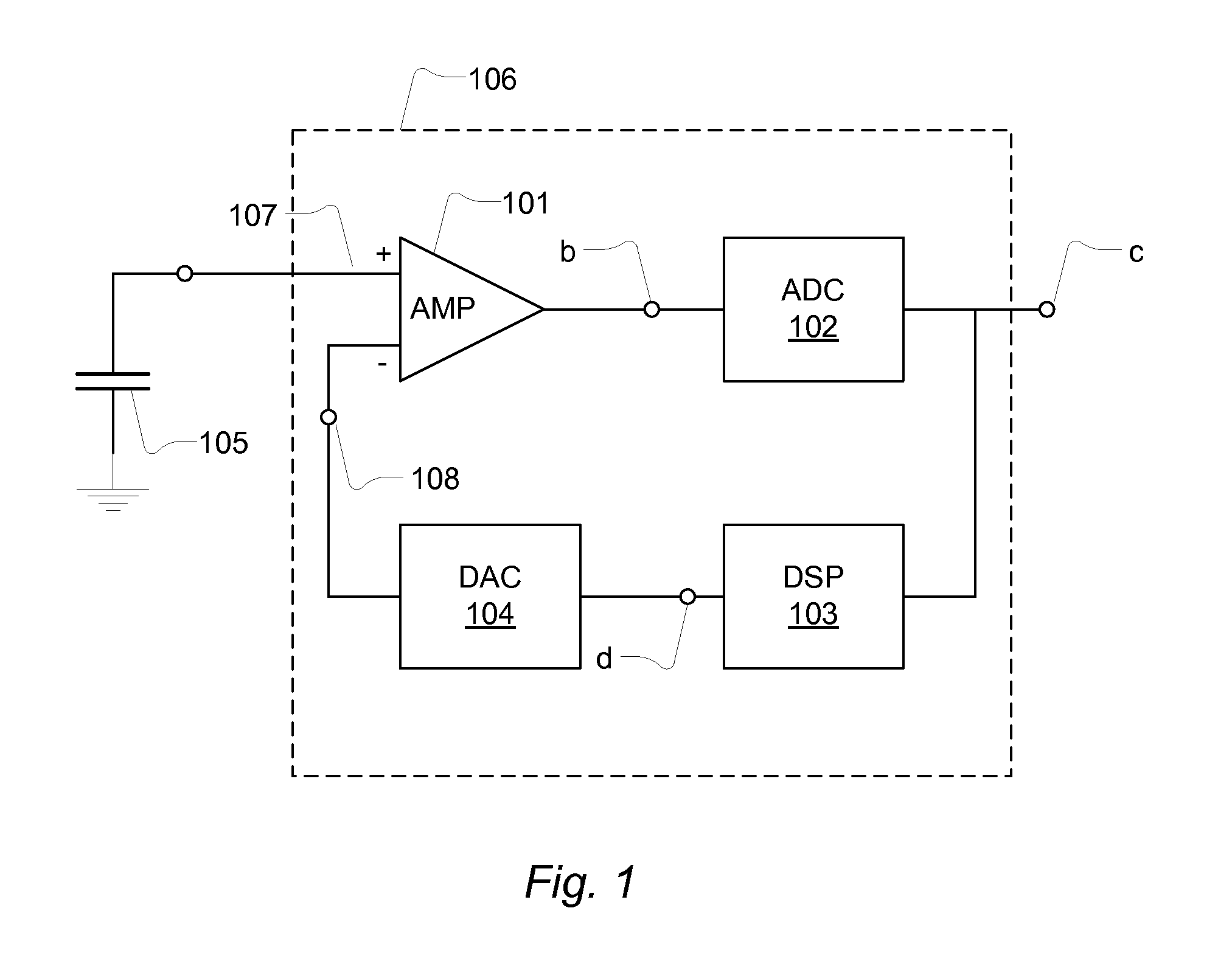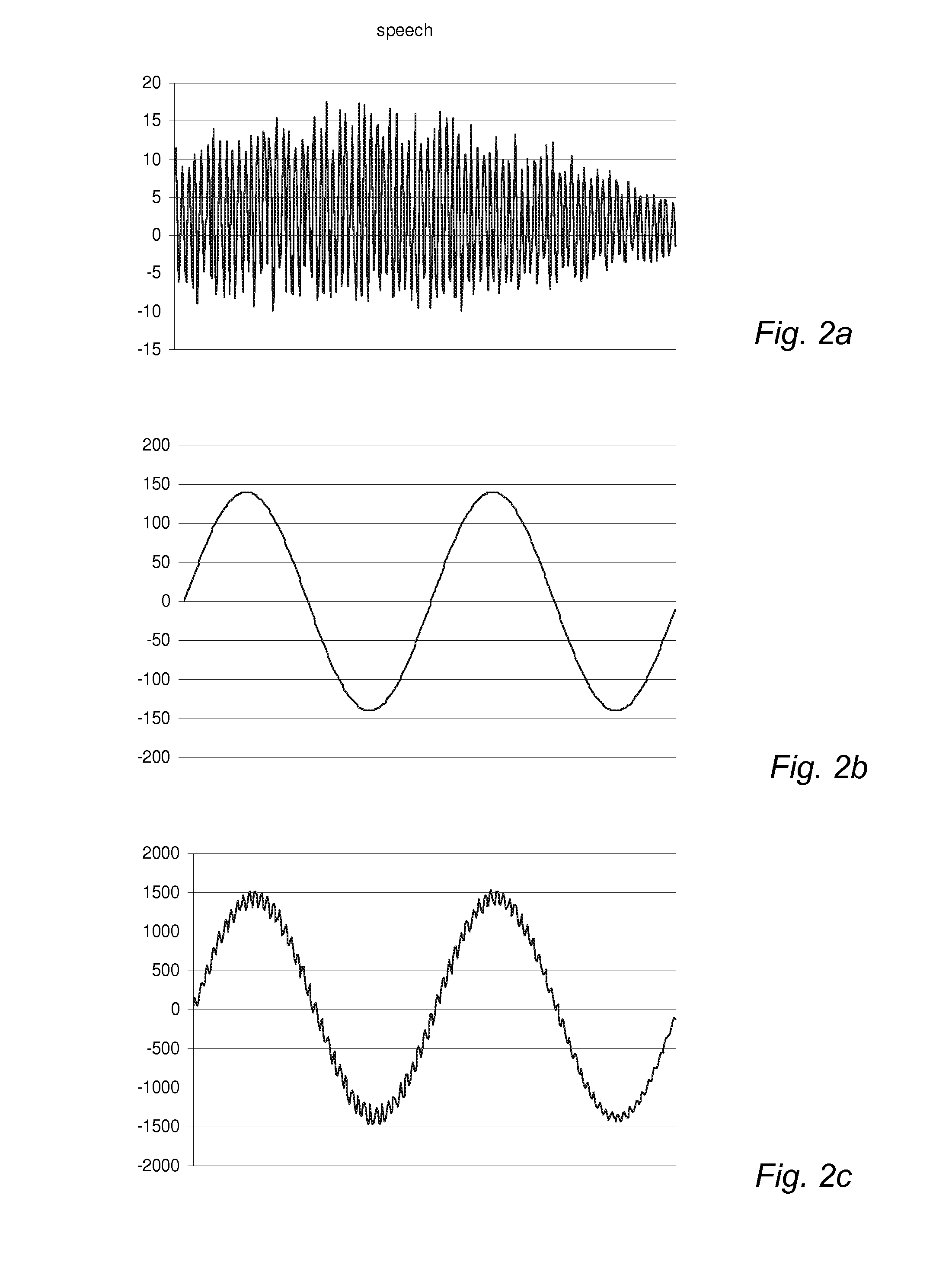Signal conditioner with suppression of interfering signals
a signal conditioner and signal technology, applied in the field of signal conditioners, can solve the problems of inability to fully meet the low cost demand, the inability to remove acoustic noise in the audio band (also denoted in-band noise), and the inability to completely damage the desired audio signal, so as to improve the achievable gain of the preamplifier, improve the achievable signal quality, and improve the effect of amplitud
- Summary
- Abstract
- Description
- Claims
- Application Information
AI Technical Summary
Benefits of technology
Problems solved by technology
Method used
Image
Examples
Embodiment Construction
[0086]FIG. 1 shows a transducer and a signal conditioner 106. The transducer is a capacitive transducer 105 e.g. forming part of a condenser microphone. The capacitive transducer 105 converts a type of energy e.g. a sound pressure to an analogue electrical signal. The analogue transducer signal may comprise a desired signal and an interfering or undesired signal. The capacitive transducer 105 is coupled to a gain stage in form of preamplifier AMP, 101 that has an output terminal and a non-inverting input terminal 107 and an inverting input terminal 108 which is coupled to a feedback signal provided by a digital-to-analogue converter 104. The preamplifier is configured to receive input signals at the input terminals as a differential input and provide the output signal in response to the differential input. In general the preamplifier 101 is characterized by differential inputs that exhibit high input impedance compared to the output impedance at the output terminal. In an open loop ...
PUM
 Login to View More
Login to View More Abstract
Description
Claims
Application Information
 Login to View More
Login to View More - R&D
- Intellectual Property
- Life Sciences
- Materials
- Tech Scout
- Unparalleled Data Quality
- Higher Quality Content
- 60% Fewer Hallucinations
Browse by: Latest US Patents, China's latest patents, Technical Efficacy Thesaurus, Application Domain, Technology Topic, Popular Technical Reports.
© 2025 PatSnap. All rights reserved.Legal|Privacy policy|Modern Slavery Act Transparency Statement|Sitemap|About US| Contact US: help@patsnap.com



